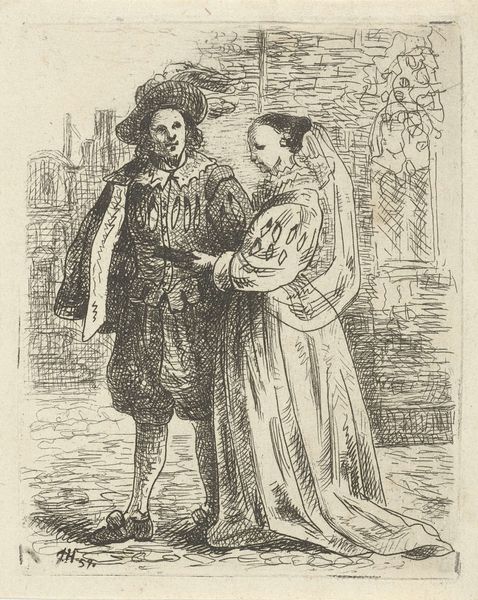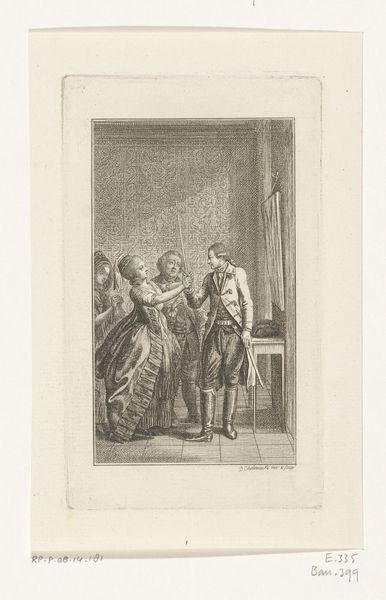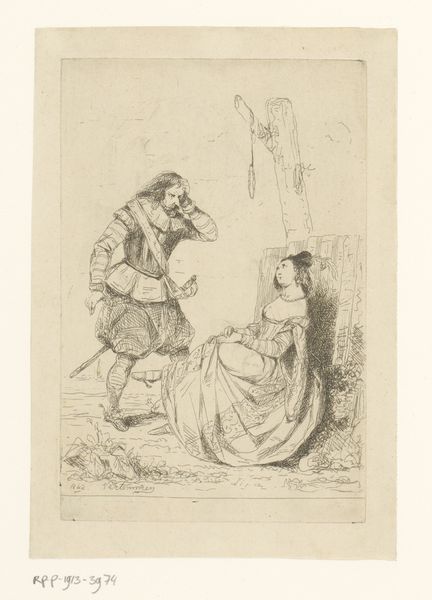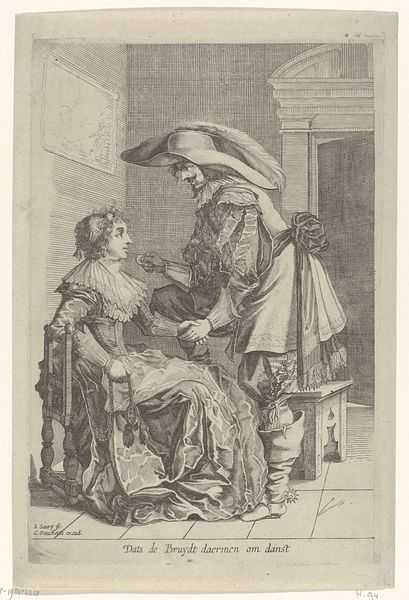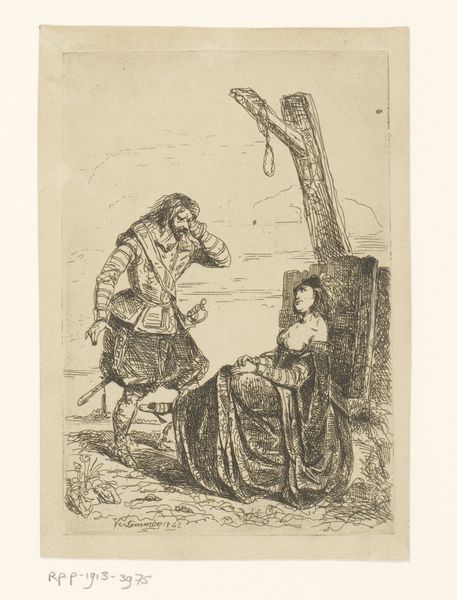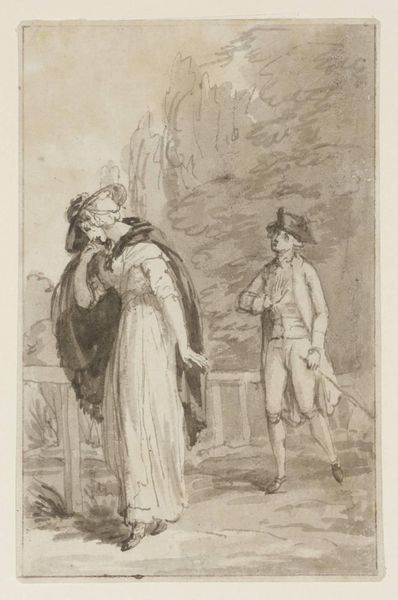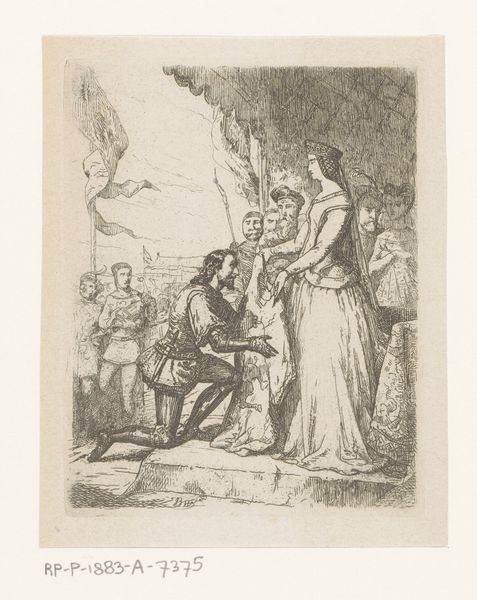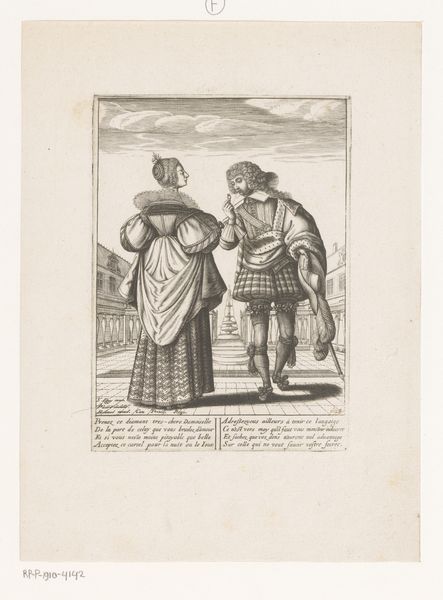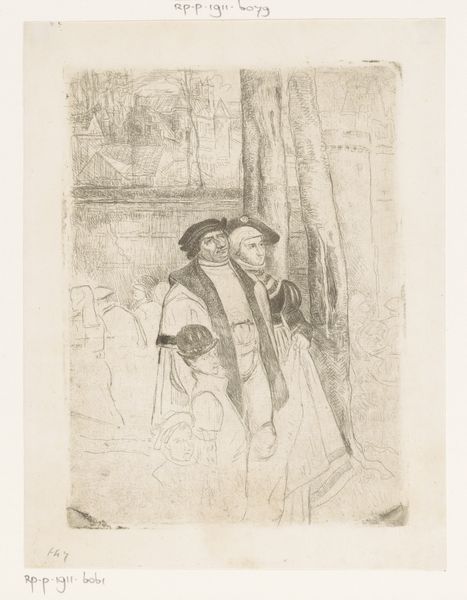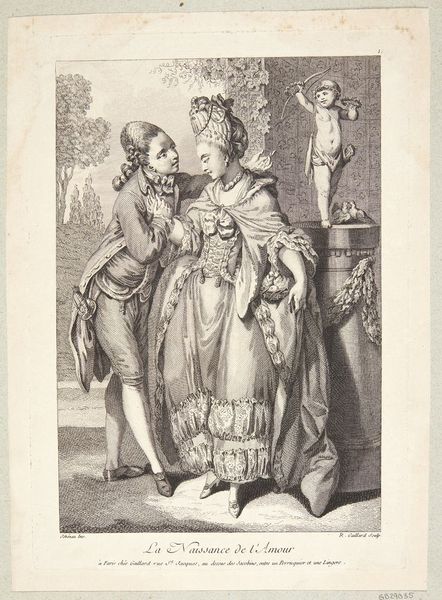
drawing, ink, pen
#
portrait
#
drawing
#
pen illustration
#
pen sketch
#
figuration
#
ink
#
pen
#
genre-painting
Dimensions: height 87 mm, width 69 mm
Copyright: Rijks Museum: Open Domain
Editor: This is "Paar in zeventiende eeuws kostuum," or "Couple in Seventeenth Century Costume," created by Jozef Hoevenaar in 1857. It's an ink drawing. I'm immediately drawn to the texture created by the pen work, but I wonder, why depict subjects in older costumes? What's going on here? Curator: Excellent question. Rather than focusing solely on aesthetic representation, let's think about the conditions of its production. Why in 1857 did an artist like Hoevenaar choose to represent a couple adorned in 17th-century garb? Editor: Was there a demand? Like, were people commissioning works with historical themes? Curator: Precisely. This type of "genre painting" catered to a burgeoning middle class that craved nostalgic representations of an idealized past, a past they perhaps saw as more "authentic" than their rapidly industrializing present. How does that nostalgia manifest in the drawing itself, through the materiality of the ink and paper? Editor: The drawing feels… delicate. Like a preserved memory, almost? But that contrasts with the reality that it was newly created. Was there something about pen and ink drawings specifically that lent themselves to this nostalgia? Curator: Think about the mass production of art at that time. Lithography and other reproductive techniques were on the rise. This more "archaic" method of pen and ink, and its connection to artisanal skill, was also being fetishized. It could be viewed as a rebuke of mass production and a return to 'quality' craftsmanship. In other words, this artist sold a commodified craft as ‘fine art.' Editor: That's fascinating, seeing how the choice of medium can itself contribute to the overall meaning, reflecting economic anxieties of the time. Thank you. Curator: Indeed, a reminder that materials and the process of production are not neutral; they actively shape how we perceive and consume art.
Comments
No comments
Be the first to comment and join the conversation on the ultimate creative platform.
